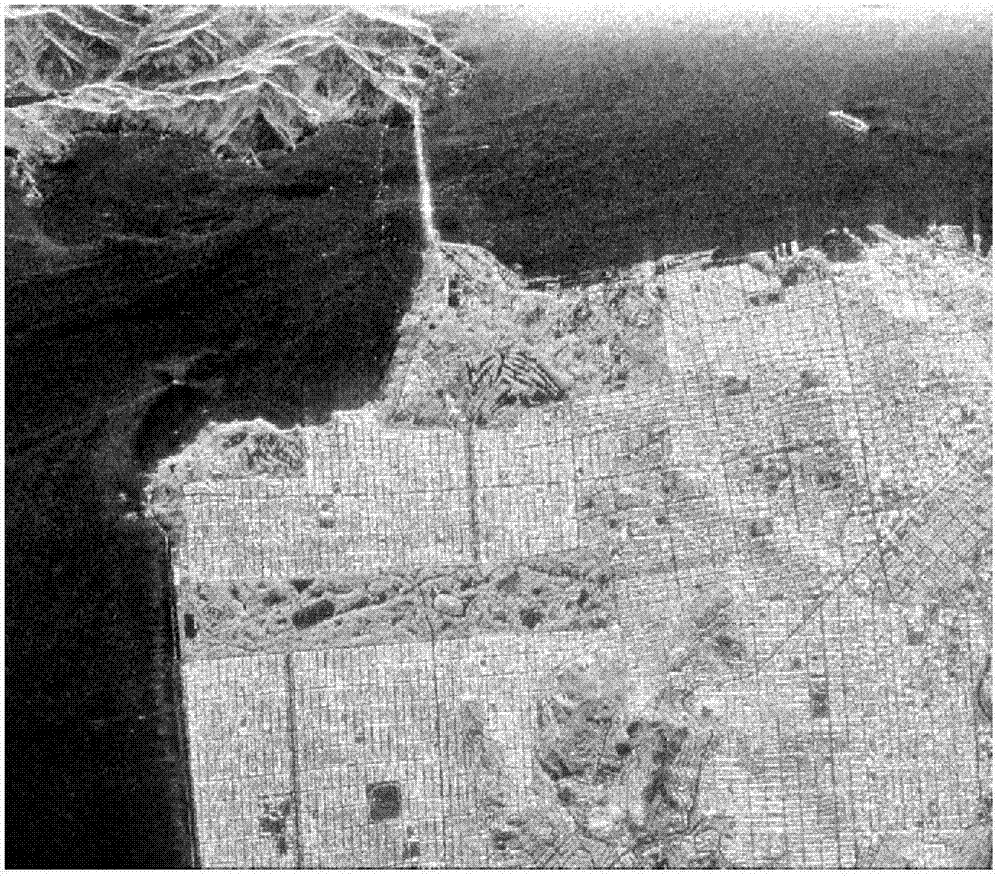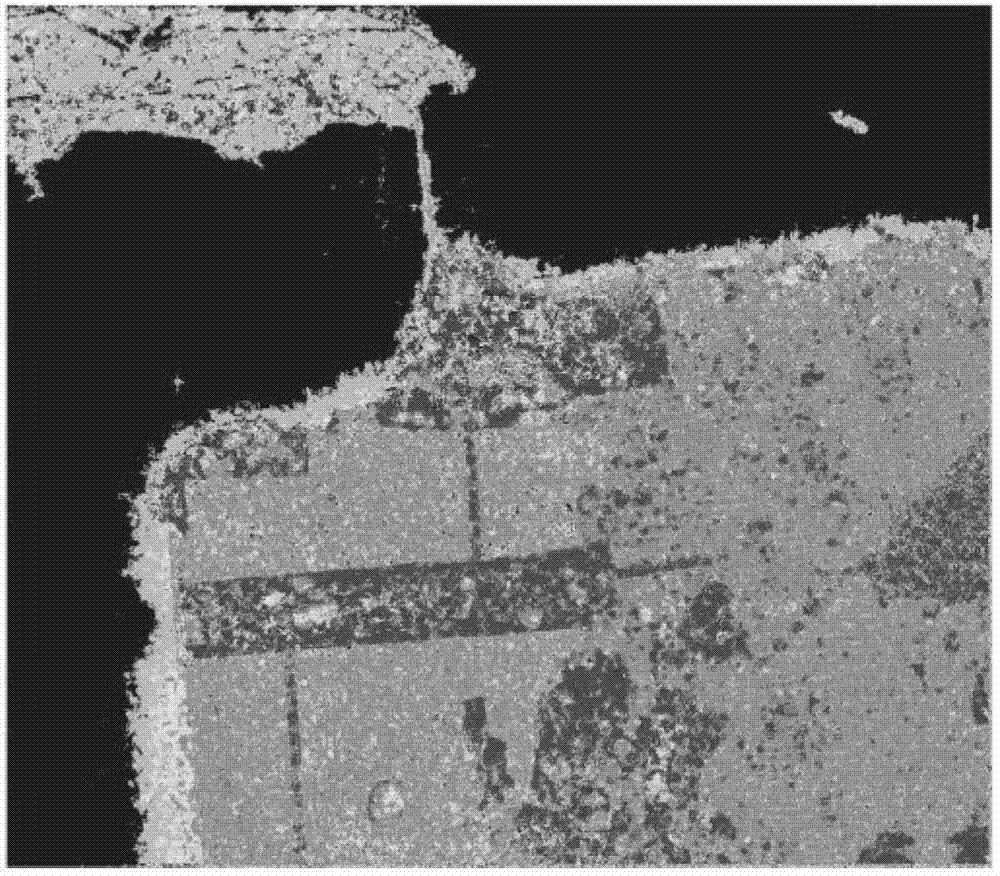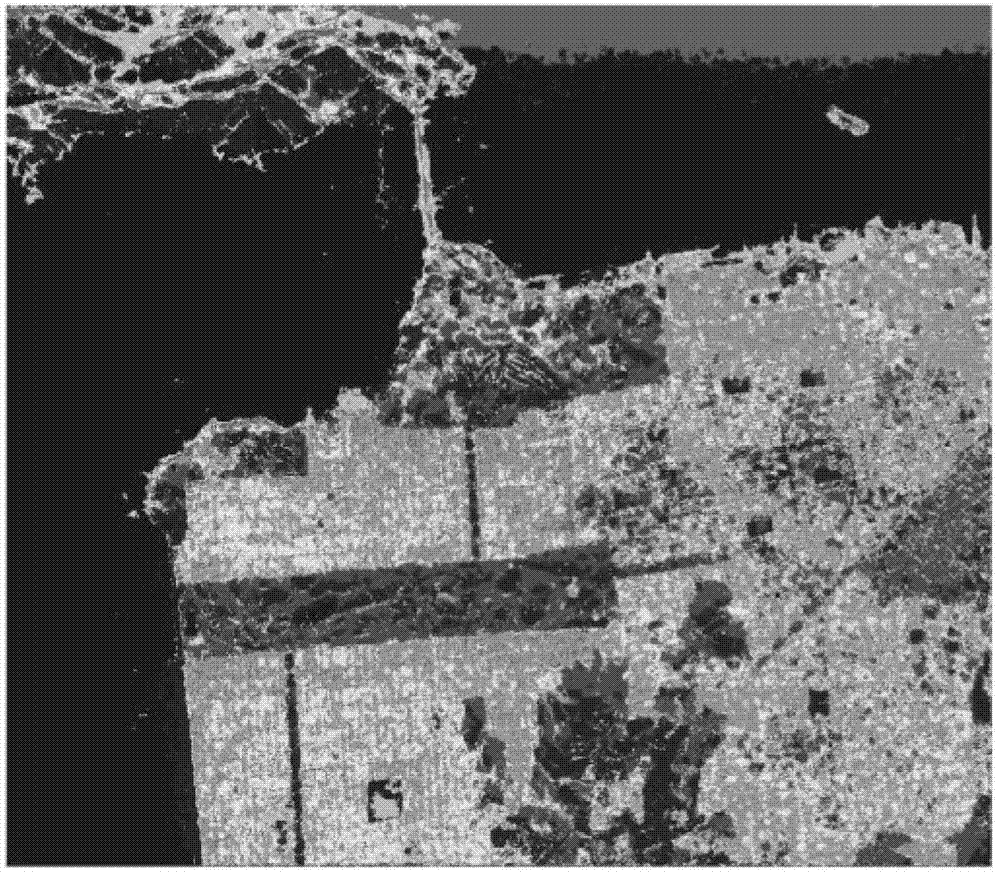Polarized synthetic aperture radar (SAR) image classification method based on Freeman decomposition and data distribution characteristics
A technology of data distribution and classification method, applied in the field of image processing, can solve the problems of arbitrary regional division, long classification time, inability to distinguish effectively, and achieve the effect of reducing computational complexity, improving classification speed, and improving classification accuracy
- Summary
- Abstract
- Description
- Claims
- Application Information
AI Technical Summary
Problems solved by technology
Method used
Image
Examples
Embodiment Construction
[0032] Reference figure 1 The specific implementation steps of the present invention are as follows:
[0033] Step 1. Read in a polarized SAR image to be classified, and perform Freeman decomposition on each pixel in the image to obtain three scattering powers P s ,P d ,P v , Where P s Represents the surface scattering power, P d Represents dihedral scattering power, P v Represents volume scattering power.
[0034] 1a) Read in each pixel of the polarized SAR image, and each pixel is a polarization covariance matrix C with 9 elements;
[0035] C = | S HH | 2 > 2 S HH S HV * > S HH S VV * > 2 S HV S HH * > 2 | S HV | 2 > 2 S HV S VV * > S VV S HH * > 2 S VV S HV * > | S VV | 2 > - - - 1 )
[0036] Among them, H means horizontal polarization, V means verti...
PUM
 Login to View More
Login to View More Abstract
Description
Claims
Application Information
 Login to View More
Login to View More - R&D
- Intellectual Property
- Life Sciences
- Materials
- Tech Scout
- Unparalleled Data Quality
- Higher Quality Content
- 60% Fewer Hallucinations
Browse by: Latest US Patents, China's latest patents, Technical Efficacy Thesaurus, Application Domain, Technology Topic, Popular Technical Reports.
© 2025 PatSnap. All rights reserved.Legal|Privacy policy|Modern Slavery Act Transparency Statement|Sitemap|About US| Contact US: help@patsnap.com



